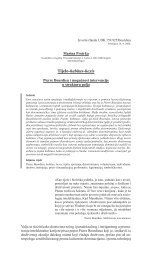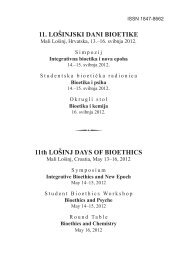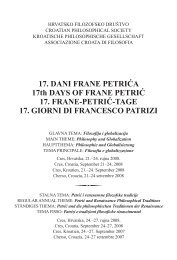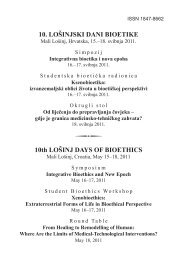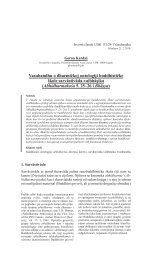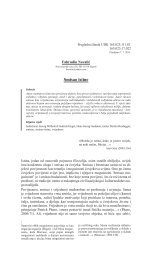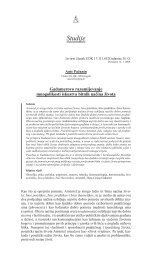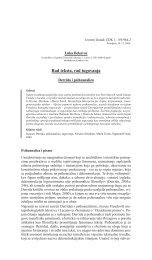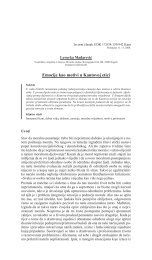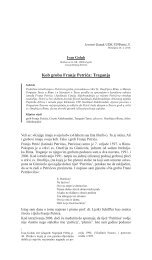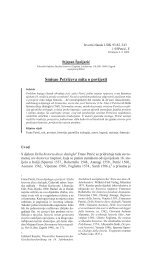ovdje - Hrvatsko filozofsko društvo
ovdje - Hrvatsko filozofsko društvo
ovdje - Hrvatsko filozofsko društvo
Create successful ePaper yourself
Turn your PDF publications into a flip-book with our unique Google optimized e-Paper software.
U formalnom smislu, koristi se teorija vjerojatnosti Bayesovog tipa, tj.<br />
evidencijska, a posebno induktivni oblik. Zakoni su modeli (Sober 2000,<br />
Kokić 2010) i funkcioniraju kao paradigma. Upoznavanje karakteristika<br />
zakona u biologiji važno je za bioetiku radi promicanja odgovarajućeg znanja<br />
o svemu što je živo i posebno za samu biologiju kako bi izbjegla pad u<br />
determinizam.<br />
WHY DO WE NEED KNOWLEDGE ABOUT THE<br />
CHARACTERISTICS OF LAWS IN BIOLOGY?<br />
Nominally “bioethics” should mean that one should take a consequent<br />
appraisal of everything that is alive, and until now it has been stressed that<br />
philosophy of biology refers to biology (as the basis of bioethics) precisely<br />
in this sense. This is the reason for the question posed in the title.<br />
In philosophy of biology there are contradictory understandings of<br />
what these laws are – they are either understood as being causal or not,<br />
and hence, as something with a strictly general range, or in contrast, as<br />
something undetermined, which may even lead to the negation of existence<br />
of such laws in biology. However, if we take that the scope of scientific research<br />
is given by possibility with various probabilities, we need a weaker<br />
notion of law in biology. Indeed, it is clear that in biology – as well as in<br />
other sciences – the principle of causality is a methodological principle for<br />
research and not one that functions as a deterministic theory, i.e. it does not<br />
claim a connection of general necessity, but only a causal conjuncture. In<br />
the first phase, a scientist studies the multiplicity of conditions which he<br />
tries to limit (Bechtel 1993, Glennan 1996, Craver 2000). He then analyzes<br />
the degrees of occurrence of phenomena on different levels in the sense of<br />
functional relations (Cummins 1983, Bechtel 1986, Craver 2001), which<br />
permits a classification in a spectrum of probability (Dawkins 2006) in the<br />
sense of the degree of strength of a law: 1. strong probability; 2. very high<br />
probability; 3. high probability: the entrenchment (Cummins 1983, Šuster<br />
2007); 4. middle probability: the invariance (Woodward 2001); 5. lower<br />
probability: the stability (Mitchell 1997,2000); 6. low probability: the resilience<br />
(Skyrms 1977).<br />
In the formal sense, in biology the Bayesian theory of probability is<br />
used, i.e. the evidential probability, especially the inductive form. The laws<br />
in biology are models (Sober 2000, Kokić 2010) and they function as the<br />
55



